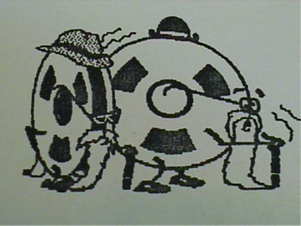MINIMUM TAPE HANDLING STANDARDS
13 Minimum handling requirements checklist
13.1 General
This checklist is not a complete guideline or summary for tape care and handling. It contains only those items that experience and testing show will have an immediate or severe effect on magnetic tape. Failure to adhere to the items on this list may cause premature loss or deterioration of magnetic tapes and should be considered misuse of the medium. These are minimum handling requirements that summarize good practices. Explanation and expansion of these and other items can be found elsewhere in the text of this standard.
13.2 Do
Familiarize yourself with proper techniques for the care and handling of magnetic tape:
13.1 General
This checklist is not a complete guideline or summary for tape care and handling. It contains only those items that experience and testing show will have an immediate or severe effect on magnetic tape. Failure to adhere to the items on this list may cause premature loss or deterioration of magnetic tapes and should be considered misuse of the medium. These are minimum handling requirements that summarize good practices. Explanation and expansion of these and other items can be found elsewhere in the text of this standard.
13.2 Do
Familiarize yourself with proper techniques for the care and handling of magnetic tape:
- Handle tapes gently;
- Keep tapes in protective cases when not in use;
- Keep tapes vertical when not in use;
- Protect both tapes and machinery from dust and debris;
- Keep tapes in a stable environment;
- Store tapes in a cool and dry place; see ISO 18923;
- Use only new tape when recording a tape for long-term storage;
- Acclimatize tapes before use if they are hot or cold;
- Inspect tapes for damage or contamination before use;
- Clean tapes before playback if they show any evidence of dirt or contamination;
- Learn and use correct procedures for operating equipment;
- Make sure machine alignment is correct before use;
- Ensure that the tape is properly seated in the machine before use;
- Activate the Record Protection feature of all master cassettes immediately after they have been recorded;
- Wind tape at low speed (library wind) entirely onto one reel after use;[Note: While not stipulated in the Standard, “low speed (library wind” is specific to analogue audio tape only- PB]
- Leave analogue audio tapes on the take-up reel after use (tails out);
- Secure tape ends on open reel tapes after use;
- Package tapes adequately for protection before shipment or transport;
- Seek experienced help as soon as possible in the case of a disaster.
- Do not expose tapes to temperature extremes;
- Do not store tapes in an area subject to dampness or possible pipe leaks (e.g., basements);
- Do not expose tapes to UV radiation, including the sun, for extended periods;
- Do not expose tapes to food or beverages;
- Do not drop or throw tapes;
- Do not stack or place objects on top of unprotected tapes;
- Do not touch tape surfaces with bare hands;
- Do not splice any portion of a video tape;
- Do not put pressure on reel flanges;
- Do not force tapes into cases or machines;
- Do not play or spool tapes that are dirty, contaminated, or wet;
- Do not play or spool tapes on a dirty, misaligned, or malfunctioning machine;
- Do not place tapes on or near sources of magnetic fields;
- Do not expose tapes to high power biological decontamination scanners. High levels of radiation can produce sufficient heat to melt or deform tapes or their plastic containers;
- Do not attempt to clean tapes contaminated with adhesives, fungus, or unknown substances unless you have the necessary experience or training.

